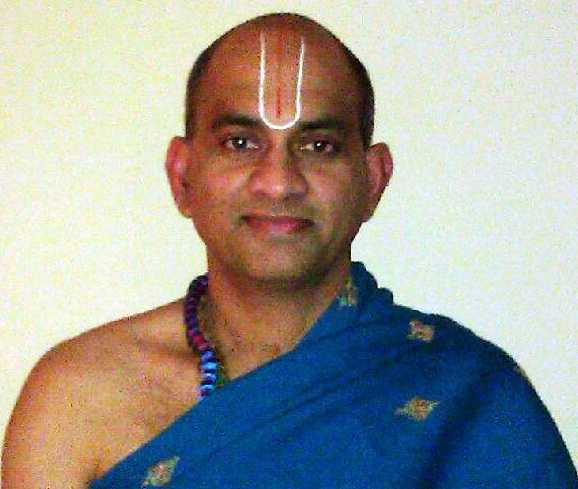Why Should We Go to the Temple to Worship?

Contributed by: Pundit Srinivas Khedam
It is not fair that Seetha Devi had to enter into fire to show her purity to Sri Rama and the whole world. It is not fair that Sri Rama killed a great warrior Wali. It is not fair that Arjuna killed Karna while he is off his chariot. All of us were brought up with questions related to these incidents depicted in our Puranas. Further, we also had doubts on many day to day rituals like do pranamam to God, put Sindhoor on our forehead, take Charanamruth (Theertham) in the temple, bow for Shataari( God’s feet), etc. Questions like these and rituals that are confusing to young children are being passed on from one generation to the other continuously. But very few adults make an effort to provide answers to these questions and explain the meaning behind such rituals prevailing in our way of life (Hinduism). One genuine reason is that many adults also don’t know the importance of all these rituals and practices which have been in our tradition for thousands of years. Going to the temple to worship is one aspect that is in discussion and debate often.
Temple is a place where Devathas(gods and goddesses) are invoked. In Sanskrit this invocation process is called “Parthista”. During the prathista gods and goddesses are invited to the place where the temple has been built and the specific gods and goddesses are asked to be present in the Vigrahas (idols) that are made of black stone or marble stone. All this process of inviting gods and goddesses to be in the Vigrahas is done with the Veda Mantras, sacred rituals, and Homas(fire sacrifice/prayer). It is the power of the Veda Mantras recited and chanted by learned priests that transform mere stone forms into Devathas.
Many Hindus worship and pray at home. It is usual practice to have small prayer room in any Hindu home. Mostly devathas( gods and goddesses) that are in ones’ prayer room at home are pictures of devathas framed. Also, there are small idols in gold, silvers, brass, panchalohas(made of five metals) in different sizes. Very few people will have the vigrahas that were given pranaprathista by the Acharyas (saints). Most of the people buy the virginals that are sold in markets and directly worshipped at home. Without the pranprathista vigrahas are equivalent to decorative dolls.
When we go to a temple we will see many other devotees who come to worship and pray. Because of devathas’ presence there is already enormous amount of energy that doesn’t exist at home. Ever persona carries some amount of energy. When enormous energy of devathas and little energy of humans combine at one confined place, the amount of energy that is totaled becomes huge. In addition to this, chanting of Veda Mantras, recitation of sthothras, singing of songs and bhajans, performances of traditional dances, etc. add extra energy to the place. Also, the prasadam cooked in the temple is done cleanly with devotion, only certain types of food is cooked and offered to devathas, and everything is kept clean. Devotees receive Theertham(sacred water) which is nothing but the water that devathas have been bathed. Also, their heads are touched with a silver hat(Shatari, which is nothing but the Holy feet of God). These two blessings take away the sins and purify devotees forever. One aspect that underpins all these activities is to create a sacred environment in the temple, because devathas are there all the time.
At home we are at more liberty. There are rarely any scope of Vedamantras being recited by Veda pandits, many devotees come together to worship and pray, food cooked with sanctity, place is kept clean, etc. Many materialistic activities that are non-sacred take place at home. Watching TV, eating meat, talking loud, using bad language, walking with shoes all over the house, etc. are just some of them. All these humanly activities will not help in creating the energy that we have in a temple.
The above two scenarios indicate the difference between the devathas at temple and devathas at home. So, when we worship at temple we are worshipping not idols, but worshipping devathas. Since the devathas at temple were invoked with Veda Manthras, what one sees in a temple is not a stone idol but actual devathas. On the other hand, what many people at home have are pictures and idols of devathas. The energy that we get in contact with at the temple is far superior to what we get at home. The Holy Water, Blessing, Prasadam that we get at temple cannot be found at home. As Bhagavath Shankara Charya says in his Bhaja Govindam:
satsaNgatve nissNgatvaM
nissaNgatve nirmohatvam
nirmohatve nishchalatattvaM
nishcalatattve jiivanmuktiH
That means when we are in the company of devotees and good people, we will have no attachment to this world. When there is no attachment to this materialistic world, our mind will be calm and peaceful. When our mind is calm and peaceful we will be liberated from this world.
Our Sastras and Puranas have indicated at many places the importance and advantage of praying at temples than just at home. Also, many scholars have written extensively on this subject. What has been quoted and explained in this article is very little. Some usages and explanations can be interpreted in many ways. But the goal of this write up is to reach out to the group of audience who has questions about going to temples to worship.
Reference:
Sri Sri Adi Shankaracharya. 788 CE - 820 CE: Bhaja Govindam
Share on Facebook
|


